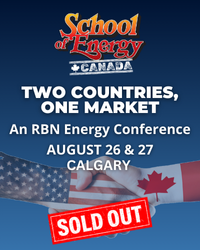In these uncertain times, with the energy transition in flux and a recession looming, it takes moxie for a company to make a major capital investment in an energy-related project, especially one that could arguably be called the first of its kind. But that’s what’s happening at a site along the Houston Ship Channel (HSC) in Pasadena, TX, where Next Wave Energy Partners, which is now completing an ethylene-to-alkylate plant, is planning an adjoining ethanol-to-ethylene facility that will enable the company to produce bioethylene, renewable alkylate and/or sustainable aviation fuel (SAF), depending on market demand, production economics and other factors. In today’s RBN blog, we discuss the ins and outs of Next Wave’s Project Lightning.
In Part 1, we took an in-depth look at the company’s 28-Mb/d ethylene-to-alkylate plant — dubbed Project Traveler — which during the coming driving season will start producing pure alkylate, an octane-boosting gasoline blendstock, from NGL-based ethylene. More specifically, the plant’s dimerization unit reacts ethylene to form butylene, and its alkylation unit reacts isobutane with butylene to form pure alkylate, with no material byproducts. The thinking behind the project is that a combination of NGL production growth and new Gulf Coast ethylene supply — plus increasing demand for alkylate — would be a win-win-win for ethylene producers, refiners and Next Wave itself. We noted that high octane, low Reid vapor pressure (RVP) and low sulfur content are three of the most desirable qualities for gasoline blendstock, and alkylate (typically produced as part of the crude oil refining process and representing about 15% of the total gasoline pool) has perhaps the best combo of the three.
Today, as promised, we’ll dive into Project Lightning, which is designed to allow Next Wave and its customers to make a feedstock shift, over time, from conventional, NGL-based ethylene to chemically identical bioethylene derived from ethanol. As we previously noted in Take a Look at Me Now, bioethylene can be used to produce plastics, fibers, antifreeze and many other products, or in the case of Project Traveler, renewable alkylate (an octane booster eligible for Renewable Identification Number environmental credits — more on this in a moment) or SAF (a low-carbon-intensity alternative to crude-oil-based jet kerosene).
Join Backstage Pass to Read Full Article







